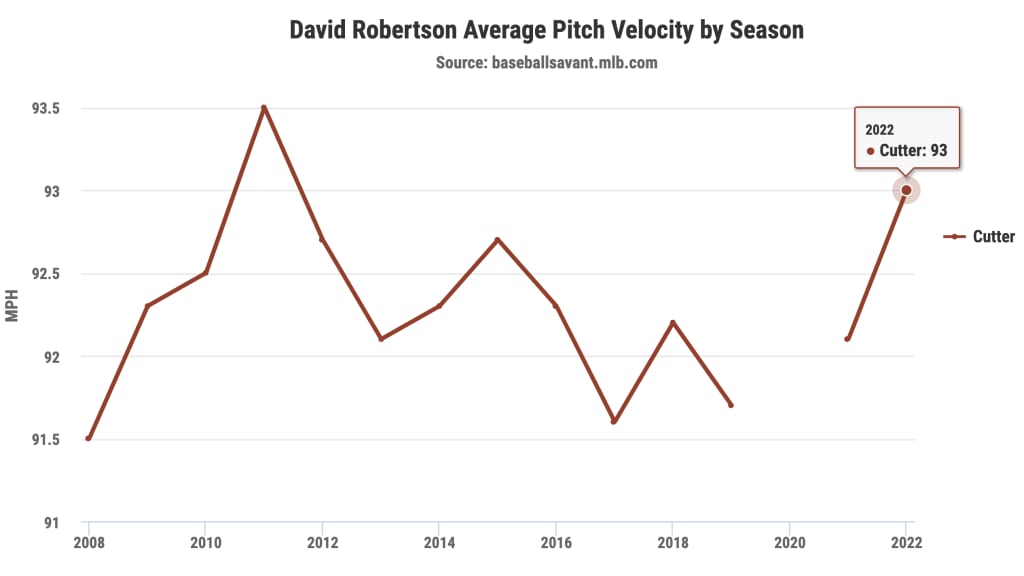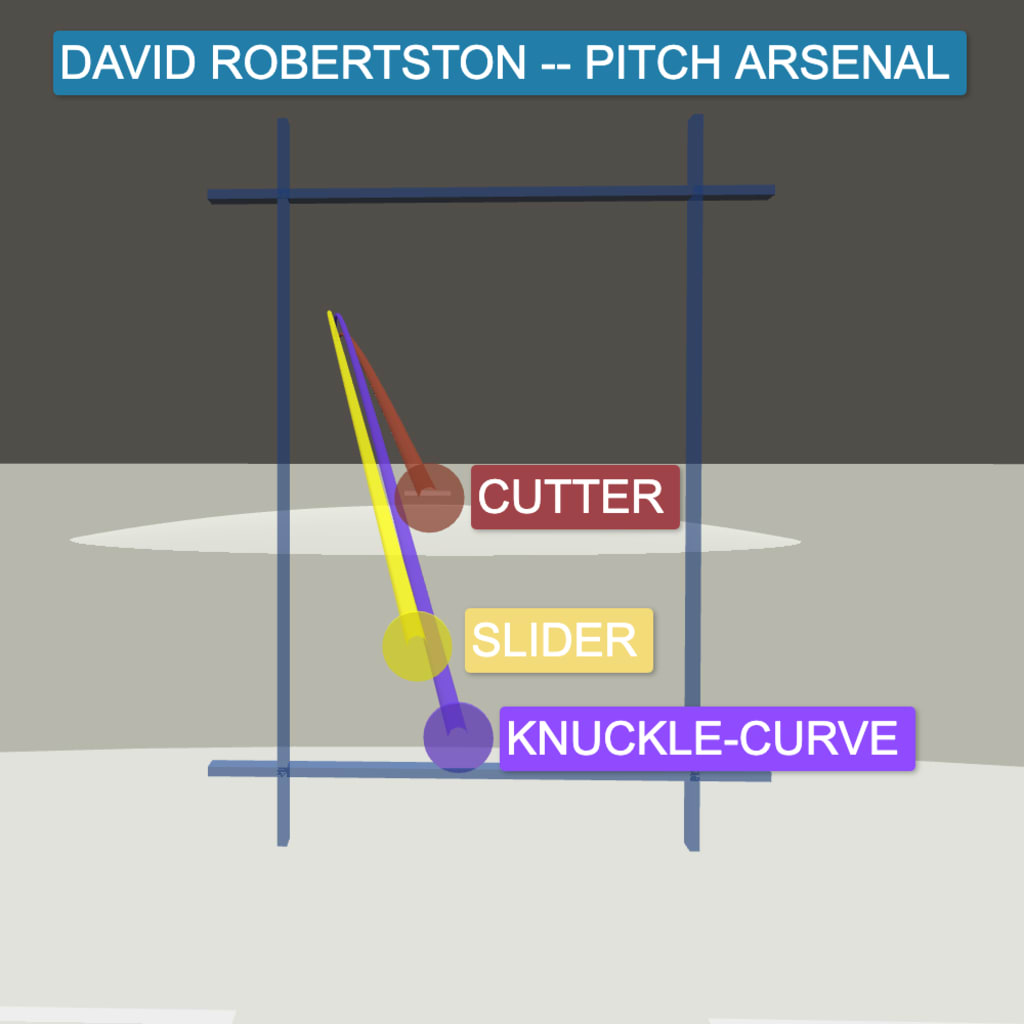David Robertson's comeback is cool enough by itself -- 37 years old, coming off Tommy John surgery in 2019, pitching in the Olympics for Team USA last year, earning a deal with the Rays down the stretch and a postseason role, and now closing games for the Cubs with eight saves, a 1.82 ERA and 12.4 strikeouts per nine innings.
But when you look at how good his stuff is right now, and you see why he's been able to lock down games as the Cubs' closer -- and why he's going to be a sought-after trade target ahead of the Trade Deadline.
Let's break down how Robertson is back to pitching like the relief ace he was in the mid-2010s.
(All Statcast stats are through Thursday's games.)
His cutter is its old self
Robertson's signature pitch has been his cutter ever since he was teammates with the great Mariano Rivera. Well, that cutter is as sharp as it's been in years.
Robertson is averaging 93.0 mph with the cutter this season. That's his highest average cutter velocity in over a decade -- the only season of his career where it's been higher was back in 2011 (93.5 mph).

Robertson's cutter velo is up almost a full mph from his stint with the Rays last season (92.1 mph), and even higher than where it sat in the postseason (92.7 mph), when velocity often bumps.
About a quarter of the plate appearances decided on Robertson's cutter are strikeouts (23.4%), his highest rate since 2017, when he had a 1.84 ERA and 98 K's in 68 1/3 innings.
His breaking stuff is almost unhittable
Robertson has the cutter to attack hitters and a pair of breaking balls -- a curveball and slider -- to put them away. Both of those secondary pitches are lights-out right now.
Robertson has held opponents to a combined batting average of .045 on his curveball and slider this season. Hitters are 2-for-29 with 17 strikeouts against his curve, and 0-for-15 with 5 K's against his slider. He has the lowest batting average allowed on breaking pitches of any pitcher.
Lowest BA allowed on breaking pitches, 2022
Min. 40 PA ending on breaking pitches
1) David Robertson (Cubs): .045 (2-for-44, 22 K)
2) Dylan Coleman (Royals): .079
3) Daniel Bard (Rockies): .080
4) Tony Gonsolin (Dodgers): .086
5) Jordan Montgomery (Yankees): .089
Half the at-bats decided on Robertson's breaking pitches are strikeouts. Hitters are whiffing on close to half their swings against them (51% vs. the curve, 44% vs. the slider), giving D-Rob the sixth-highest breaking ball whiff rate in baseball.
Highest whiff rate on breaking pitches, 2022
Min. 75 swings vs. breaking pitches
- Alex Lange (Tigers): 57.3%
- Edwin Díaz (Mets): 51.5%
- Spencer Strider (Braves): 51.2%
- David Peterson (Mets): 49.0%
- Corbin Burnes (Brewers): 48.7%
6) (tie) David Robertson (Cubs): 47.9%
6) (tie) Giovanny Gallegos (Cardinals): 47.9%
Even when hitters do make contact, all they can do is hit the curve and slider into the ground. Robertson is inducing a 77% ground ball rate with his breaking pitches, third-highest behind Craig Kimbrel and Daniel Hudson. The reason Robertson can get all those ground balls is because of how his pitches move: down and away from the barrel.
His pitches all have sharp drop
Robertson is deploying close to an even pitch mix between his cutter and his two breaking balls, throwing the cutter 54% of the time and the breaking balls 46% of the time (24% curves, 22% sliders). So it's hard to know which type of pitch is coming … and once he throws one of the three, it's hard to tell which one it is.

All three of Robertson's pitches spin the same amount. His cutter has a 2,605 rpm spin rate, his curveball is at 2,631 rpm and his slider is at 2,645 rpm. They also move in the same basic direction.
The key for all three is sharp vertical movement.
- Robertson's cutter drops seven inches more than an average cutter
- Robertson's slider drops three inches more than an average slider
- Robertson's curveball drops four inches more than an average curveball
Same spin, same style of sharp downward break. Now, here's how Robertson's pitches separate themselves on the way to the plate: different velocity and different size of the break.
- The cutter is the tightest, coming in at 93 mph, dropping 14 inches overall and breaking only one inch horizontally
- The slider comes in at 82 mph, drops 43 inches and breaks 10 inches horizontally
- The curveball comes in at 85 mph, drops 50 inches and breaks eight inches horizontally
Now you can see how three pitches that all break down and to Robertson's glove side can still power his arsenal and make him a reliable closer, even now in 2022.
